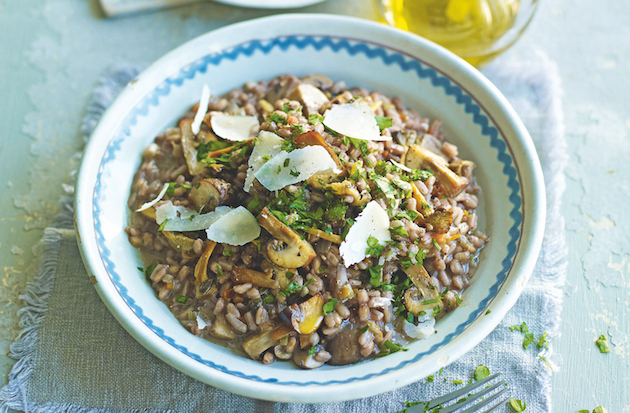Partridge risotto
Game recipe: Partridge risotto: This month Mark, a keen shot, shows us what can be done with some late season…
Win CENS ProFlex DX5 earplugs worth £1,149 – enter here

Pheasant with pearl barley is the perfect way to use meat left over from a roast or to use leg meat or breast meat and makes a change from a rice-based risotto.
For the pheasant breasts
For the risotto
Heat a frying pan over a medium to high heat, add the butter and olive oil, then add the crushed garlic cloves and thyme sprigs and fry until it becomes aromatic. Add the pheasant breasts and cook for a couple of minutes on each side, basting with the flavoured butter and oil, until they are well–browned. Remove the breasts from the pan, cover with foil and set aside.
In a separate pan, add half the butter with the olive oil and gently fry the shallot and celery, stirring regularly to prevent browning. When the shallot and celery have softened (after 5 to 10 minutes) add the crushed garlic and the pearl barley, stir thoroughly, then add the vermouth and half the thyme leaves and continue cooking until the vermouth has become incorporated.
Now add a little of the stock, stir well to mix and, once absorbed, add more, stirring regularly. Repeat the process until the stock is used up and the pearl barley is beginning to become tender but still has a little bite (about 30 minutes). You may need a little more, or a little less stock, but 500ml is usually about right.
At this stage, season to your taste with sea salt and freshly grated black pepper, slice the pheasant breasts then add them to the barley and stir through. After a couple of minutes take the pan off the heat, add the remaining butter and the grated parmesan and stir through.
Check for seasoning and serve scattered with the remaining thyme leaves.
Game recipe: Partridge risotto: This month Mark, a keen shot, shows us what can be done with some late season…
Wild wood pigeon breast is sustainable and local, with a woodland taste. It’s an excellent source of protein and minerals…
Incorporating a few thickly sliced mushrooms – variety of your choice, but chestnut are ideal – when you fry the pheasant at the beginning adds a new dimension to the recipe. They work beautifully with pheasant, barley and thyme.
Get the latest news delivered direct to your door
Discover the ultimate companion for field sports enthusiasts with Shooting Times & Country Magazine, the UK’s leading weekly publication that has been at the forefront of shooting culture since 1882. Subscribers gain access to expert tips, comprehensive gear reviews, seasonal advice and a vibrant community of like-minded shooters.
Save on shop price when you subscribe with weekly issues featuring in-depth articles on gundog training, exclusive member offers and access to the digital back issue library. A Shooting Times & Country subscription is more than a magazine, don’t just read about the countryside; immerse yourself in its most authoritative and engaging publication.

